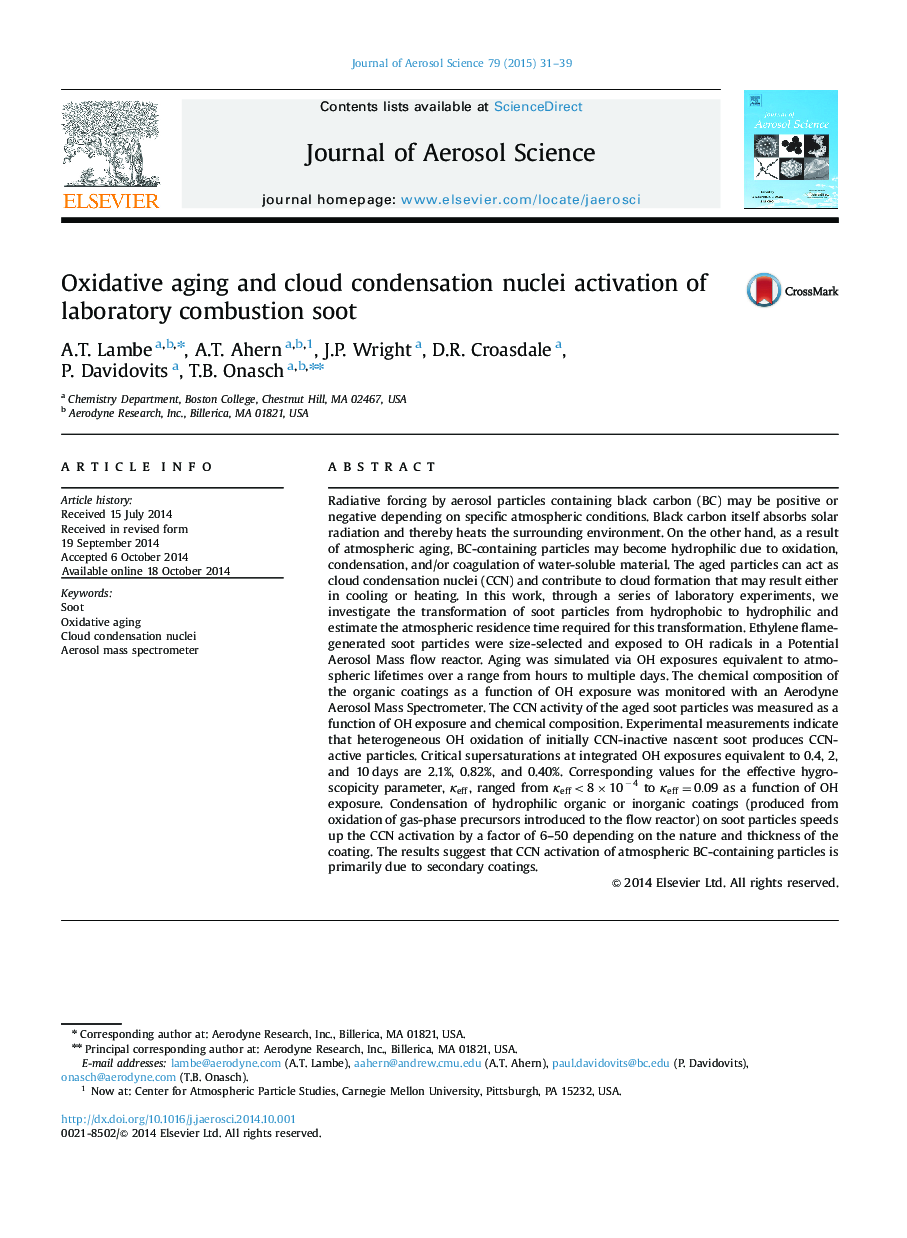| Article ID | Journal | Published Year | Pages | File Type |
|---|---|---|---|---|
| 4452294 | Journal of Aerosol Science | 2015 | 9 Pages |
Radiative forcing by aerosol particles containing black carbon (BC) may be positive or negative depending on specific atmospheric conditions. Black carbon itself absorbs solar radiation and thereby heats the surrounding environment. On the other hand, as a result of atmospheric aging, BC-containing particles may become hydrophilic due to oxidation, condensation, and/or coagulation of water-soluble material. The aged particles can act as cloud condensation nuclei (CCN) and contribute to cloud formation that may result either in cooling or heating. In this work, through a series of laboratory experiments, we investigate the transformation of soot particles from hydrophobic to hydrophilic and estimate the atmospheric residence time required for this transformation. Ethylene flame-generated soot particles were size-selected and exposed to OH radicals in a Potential Aerosol Mass flow reactor. Aging was simulated via OH exposures equivalent to atmospheric lifetimes over a range from hours to multiple days. The chemical composition of the organic coatings as a function of OH exposure was monitored with an Aerodyne Aerosol Mass Spectrometer. The CCN activity of the aged soot particles was measured as a function of OH exposure and chemical composition. Experimental measurements indicate that heterogeneous OH oxidation of initially CCN-inactive nascent soot produces CCN-active particles. Critical supersaturations at integrated OH exposures equivalent to 0.4, 2, and 10 days are 2.1%, 0.82%, and 0.40%. Corresponding values for the effective hygroscopicity parameter, κeffκeff, ranged from κeff<8×10−4κeff<8×10−4 to κeff=0.09κeff=0.09 as a function of OH exposure. Condensation of hydrophilic organic or inorganic coatings (produced from oxidation of gas-phase precursors introduced to the flow reactor) on soot particles speeds up the CCN activation by a factor of 6–50 depending on the nature and thickness of the coating. The results suggest that CCN activation of atmospheric BC-containing particles is primarily due to secondary coatings.
